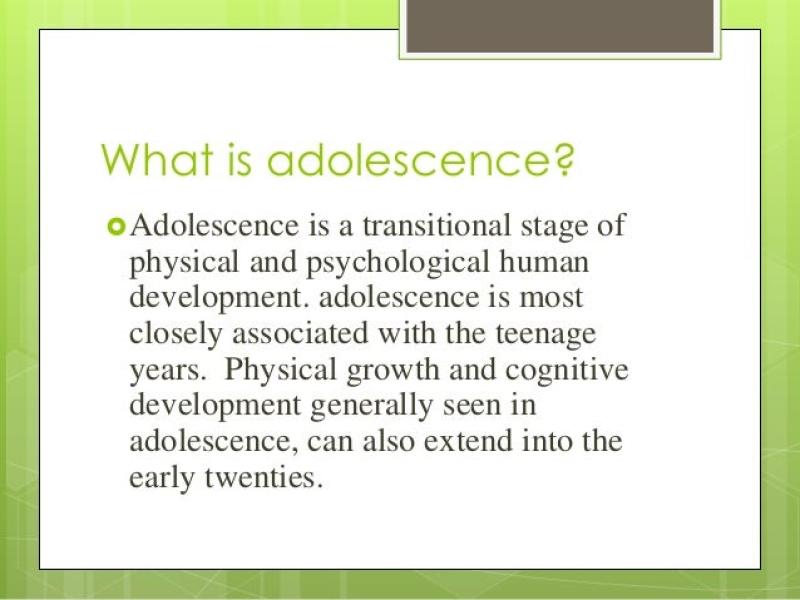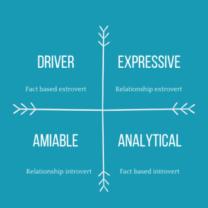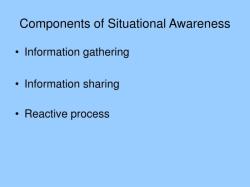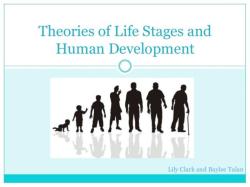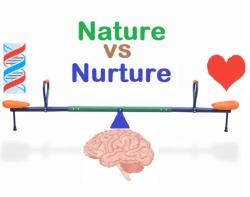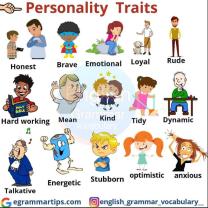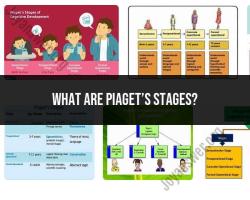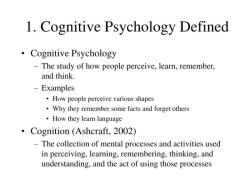What are the characteristics of adolescence in psychology?
Adolescence is a developmental stage characterized by significant physical, cognitive, and social changes. From a psychological perspective, several key characteristics define this period of human development:
Identity Formation:
- Adolescents are actively exploring and developing their sense of self.
- They may experiment with different roles, values, and beliefs to establish a coherent identity.
Puberty and Physical Changes:
- Adolescence is marked by the onset of puberty, involving rapid physical growth and sexual maturation.
- Hormonal changes impact mood, emotions, and the development of secondary sexual characteristics.
Cognitive Development:
- Abstract thinking and reasoning abilities continue to develop during adolescence.
- Adolescents become capable of more complex and hypothetical thinking, exploring moral and philosophical questions.
Emotional Intensity:
- Emotional experiences become more intense and varied during adolescence.
- Adolescents may struggle with mood swings, heightened self-consciousness, and the challenge of regulating strong emotions.
Social Relationships:
- Peer relationships become increasingly important during adolescence.
- There is a desire for autonomy and independence from parents, coupled with a strong need for social connection and peer acceptance.
Risk-Taking Behavior:
- Adolescents often engage in more risk-taking behaviors as they seek novelty and excitement.
- This behavior is partly attributed to the developing brain's heightened sensitivity to reward and peer influence.
Identity vs. Role Confusion:
- According to Erik Erikson's psychosocial theory, adolescence is a stage where individuals grapple with forming a clear sense of identity or experiencing confusion about their roles and future.
Egocentrism:
- Adolescents may exhibit egocentric thinking, where they perceive themselves as the center of attention and believe others are highly focused on their actions and appearance.
Search for Autonomy:
- There is a natural drive for increased independence and autonomy during adolescence.
- This can lead to conflicts with parents and other authority figures as adolescents seek to establish their own identities.
Moral Development:
- Adolescents begin to develop a more complex understanding of morality.
- Moral reasoning evolves, and individuals start to question and develop their own ethical principles.
Identity Crisis:
- Adolescents may go through a period of identity crisis, questioning their values, beliefs, and life goals.
- The resolution of this crisis is crucial for the development of a stable self-identity.
Peer Pressure and Conformity:
- Peer influence becomes a powerful force during adolescence, contributing to both positive and negative behaviors.
- Conformity to peer norms can impact decision-making and behavior.
Understanding these psychological characteristics is essential for parents, educators, and mental health professionals to support adolescents as they navigate the challenges and opportunities of this critical stage of development. It's important to recognize the diversity of experiences within adolescence and to provide a supportive environment for healthy growth and exploration.
What are the characteristics of adolescence in the field of psychology?
Adolescence is a period of rapid physical, cognitive, and emotional development. Psychologists have identified a number of characteristics that are associated with adolescence, including:
- Physical development: Adolescents experience rapid physical growth and development, including puberty. This can lead to changes in body image and self-esteem.
- Cognitive development: Adolescents develop new cognitive abilities, such as abstract thinking and critical thinking. This allows them to think more about themselves and the world around them.
- Emotional development: Adolescents experience a range of emotions, including anger, sadness, and joy. They may also experience mood swings and irritability.
- Identity development: Adolescents begin to develop their own identity, including their values, beliefs, and interests. They may experiment with different identities and roles.
- Social development: Adolescents become more independent from their parents and peers become more important to them. They may develop romantic relationships and begin to think about their future careers.
How is adolescence defined in psychological terms, and what behavioral or cognitive traits are associated with this stage?
In psychological terms, adolescence is defined as the period of transition from childhood to adulthood. It is typically thought to begin around age 11 or 12 and end around age 18 or 19.
Some of the behavioral and cognitive traits that are associated with adolescence include:
- Increased risk-taking behavior: Adolescents are more likely to engage in risk-taking behavior, such as substance use, sexual activity, and reckless driving.
- Increased peer influence: Adolescents are more influenced by their peers than by their parents.
- Increased emotional intensity: Adolescents experience emotions more intensely than adults.
- Increased self-consciousness: Adolescents are more self-conscious and concerned about their appearance and how others perceive them.
- Development of abstract thinking: Adolescents develop the ability to think abstractly and reason about complex concepts.
Are there theories or perspectives that explain the characteristics of adolescence?
There are a number of theories and perspectives that attempt to explain the characteristics of adolescence. Some of the most well-known theories include:
- Psychosocial theory of development: Erik Erikson's psychosocial theory of development suggests that adolescents are facing the identity crisis stage of development. During this stage, they are trying to figure out who they are and what they want to do with their lives.
- Cognitive developmental theory: Jean Piaget's cognitive developmental theory suggests that adolescents are transitioning from concrete operational thinking to formal operational thinking. This means that they are able to think abstractly and reason about complex concepts.
- Sociocultural theory: Urie Bronfenbrenner's sociocultural theory suggests that adolescents are influenced by a variety of factors, including their family, peers, school, and community. These factors can shape their behavior, development, and identity.
It is important to note that adolescence is a complex and multifaceted stage of development. There is no single theory that can fully explain all of the characteristics of adolescence. However, the theories and perspectives mentioned above provide some helpful insights into this important stage of life.
